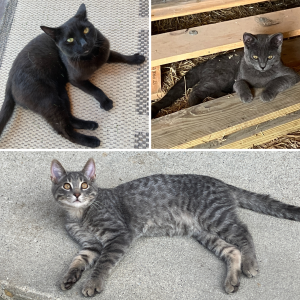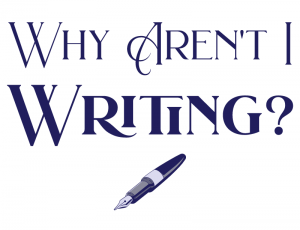
I don’t know whether to make a joke about wishing I could de-age myself or wishing I could do a de-aged Harrison Ford. I guarantee both would have been hilarious.
The actors are striking and it matters for all of us.
Note: I’d already written this week’s newsletter, because I’m technically on holiday, but this all felt rather time-sensitive, so you’ll get that newsletter next time. I’m also really jetlagged so any incoherency is because of that. Honest.
Hi there,
Well, it happened. Last week, the Screen Actors Guild – American Federation of Television and Radio Artists (SAG-AFTRA) went on strike after it failed to reach an agreement with the Alliance of Motion Picture and Television Producers (AMPTP), ie Netflix, Amazon, Apple, Disney, Discovery-Warner, NBC Universal, Paramount and Sony.
As I said back on 9 May about the WGA strike, this isn’t a localised dispute that non-Americans can safely ignore. The outcome of these negotiations will have knock-on effects for actors around the world because these studios have global reach. What happens in Hollywood will become the template for what happens in the UK and elsewhere. If AMPTP can reduce the amount of money they pay actors and writers in the US, then you can be your bottom dollar they’ll gut contracts in other territories as well.
But what if we aren’t actors or writers? Or at least, not actors or writers in Hollywood. Should we still care?
Well, apart from the obvious fact that we should all care about people who aren’t us getting treated fairly just as a matter of principle, if these strikes fail, anyone who watches anything from any of the AMPTP studios should care, and particularly about generative computing (still refusing to call it AI).
One of SAG-AFTRA’s beefs with the AMPTP is about the studios’ proposal that they should be allowed to scan an actor’s likeness and voice, and keep that data forever.
When asked about the proposal during the press conference, Crabtree-Ireland said that “This ‘groundbreaking’ AI proposal that they gave us yesterday, they proposed that our background performers should be able to be scanned, get one day’s pay, and their companies should own that scan, their image, their likeness and should be able to use it for the rest of eternity on any project they want, with no consent and no compensation. So if you think that’s a groundbreaking proposal, I suggest you think again.”
AMPTP denied that they wanted to hold this data in perpetuity, but we all know that given the chance, they will. They’re already doing it do voice actors, and that’s a cow path that will only turn into a seven lane highway when it’s paved.
Now, as much as I love a de-aged Harrison Ford – and I really do love a de-aged Harrison Ford – the last thing I want is an industry dominated by established stars being de-aged to feature in endless sequels and prequels. Industrial Light & Magic, who did the effects for Indiana Jones & the Dial of Destiny, emphasise that it’s not easy to de-age an actor.
ILM used a set of tools it calls FaceSwap. Like the the purpose-built tech ILM developed to let Martin Scorsese de-age actors for The Irishman, Dial of Destiny utilized a proprietary system called Flux that used two infrared cameras perched on either side of the one filming Ford to gather information from his performance. Unlike The Irishman, it also involved what the actor called “dots on my face” that captured even more data. All of that info was then combined to create a “CG mask” that could be placed on Indy in every frame.
To ensure Ford looked like his younger self, the ILM team used machine learning tools to scour years of footage of the actor that Lucasfilm had in its archives. The team also worked with VFX tools from Disney Research and a “smattering” of other sources to fine-tune the de-aged shots.
But that’s where we are now. In a year, or three years, or five years, where will we be? Obviously, de-aging is only going to get easier, as will constructing entirely new sequences from scratch. (Or removing the clothes from an actor who didn’t want to do a nude scene. Just think about the ethics of that for a second.)
Hollywood already has an unhealthy obsession with sequels, prequels, reboots and existing IP. The ten highest grossing movies of 2022 that were released in the US were all sequels or reboots, without a single original film in the list. (If you include non-US titles then Water Gate Bridge, a Chinese propaganda movie, comes in at no 9). The next ten are all based on existing IP, whether novels, computer games, short films, other movies, or comics.
This over-reliance on the familiar may be backfiring. Arash Amel, the Welsh-Iranian screenwriter, has a great thread about how this summer’s blockbusters aren’t doing as well at the box office as expected. Amel puts this down, correctly I think, to a loss of creative risk-taking caused by the need to make big profits to satisfy Wall Street. And it’s only going to get worse, as he points out, because of the destruction of the talent pipeline – if movies are dominated by established names and franchises, how do new actors and new ideas get a foothold?
I’ve heard the same point made by writers with regard to their experiences in TV. Young writers aren’t getting the security of, say, a 13- or 24-episode contract, and aren’t getting to learn and grow. And they aren’t being given the opportunity to go to set and see how a TV show is actually made and learn how to be that on-set writer.
This is all storing up trouble for the future because the big names are not going to live forever. Or are they? Is generative computing going to be able to replicate both writers and actors, to the point where we don’t need anyone new?
How fucking dull would that make movies and TV?
It’s not just SAG-AFTRA members who are worried about this. Equity, the UK acting union, are also concerned.
Liam Budd, of UK acting union Equity, said: “We’re seeing this technology used in a range of things like automated audiobooks, synthesised voiceover work, digital avatars for corporate videos, or also the role of deepfakes that are being used in films.”
But as film-maker and writer Justine Bateman points out:
“Tech should solve a problem and there’s no problem that those using AI solves. We don’t have a lack of writers, we don’t have a lack of actors, we don’t have a lack of film-makers – so we don’t need AI,” she said.
“The problem it solves is for the corporations that feel they don’t have wide enough profit margins – because if you can eliminate the overhead of having to pay everyone you can appease Wall Street and have greater earnings reports.
“If AI use proliferates, the entertainment industry it will crater the entire structure of this business.”
Another pain point for actors, as with writers, is money. Residuals – the payments you get when an episode is repeated – are tiny for streaming because the last time writers’ and actors’ contracts were negotiated, streaming was still new and the studios argued to keep residuals low. Now, of course, streaming is the norm and both writers and actors are struggling to make a living from their work.
The Guardian has a depressing piece about just how hard it is for actors to make ends meet, with stories from the actors on Orange Is The New Black:
Kimiko Glenn, who played Brook Soso, posted a video to Instagram in which she opened a Sag-Aftra foreign-royalty statement and, despite starring on a huge, award-winning series that helped pave the way for the current glut of streaming originals, discovered she had been paid just $27.30 (about £21). Another cast member, Matt McGorry, replied to the post revealing that he had to keep his day job throughout filming, because he couldn’t support himself on his acting salary. A further star, Beth Dover, revealed that, after deducting travel expenses, she lost money on the show.
Residuals from cable/terrestrial TV repeats used to be enough to keep an actor going between jobs, but that is no longer the case. Again, if actors can’t earn a living, the talent pipeline will completely hollow out, and the only people who’ll become actors (or writers) will be those who are independently wealthy. It’s the same with novelists, by the way, whose advances have cratered over the last decade or so.
It doesn’t have to be this way. Hollywood has the money. Mostly.
“Arts and cultural economic activity” accounted for 4.4 per cent of the US’s GDP in 2021, which is $1.02 trillion. The net worth of Hollywood as an industry is $95.45 billion as of 2022 and it employs around 2.1 million people.
The picture is a bit more complicated than that, however, as Billy Ray explains in this episode of Deadline’s Strike podcast. Some streaming services are losing money hand-over-fist, whilst others are doing OK, and others yet (guess which ones) can afford to lose money because they’re sitting on piles of cash from other arms of their business.
And, I’ll note, that the CEOs aren’t hurting for cash either, with eight major Hollywood studio CEOs collectively earning $773,000,000 last years.
So why not just pay up? The cost of the proposals from the WGA, SAG-AFTRA and Director’s Guild of America are estimated to be between $450 million and $600 million per year, which is frankly peanuts for an industry the size of Hollywood.
But this really isn’t about the money for the AMPTP. It’s about union busting.
Disney’s CEO, Bob Iger, made that clear when he said that writers and actors weren’t being “realistic” in their demands and said he found the strike “disturbing” and then went on to blame the strikers for the impact that the strike is having on associated workers, such as the Teamsters and IATSE members.
This is basic abuser talk. DARVO stands for “Deny, Attack, and Reverse Victim and Offender”, and we have much of that in Iger’s response:
Deny: “We managed, as an industry, to negotiate a very good deal with the directors guild that reflects the value that the directors contribute to this great business. We wanted to do the same thing with the writers, and we’d like to do the same thing with the actors.”
Attack: “There’s a level of expectation that they have, that is just not realistic. And they are adding to the set of the challenges that this business is already facing that is, quite frankly, very disruptive.”
Reverse Victim and Offender (sort of, but you get the idea): ”It will have a very, very damaging affect on the whole business, and unfortunately, there’s huge collateral damage in the industry to people who are supportive services, and I could go on and on. It will affect the economy of different regions, even, because of the sheer size of the business. It’s a shame, it is really a shame.”
This is not good faith talk.
Worse, insiders are saying that the AMPTP’s intention is to let the strike drag on until writers and actors start to go broke.
the studios have no intention of sitting down with the Writers Guild for several more months.
“I think we’re in for a long strike, and they’re going to let it bleed out,” said one industry veteran intimate with the POV of studio CEOs.
And that’s been the game plan all along:
Receiving positive feedback from Wall Street since the WGA went on strike May 2, Warner Bros Discovery, Apple, Netflix, Amazon, Disney, Paramount and others have become determined to “break the WGA,” as one studio exec blatantly put it.
To do so, the studios and the AMPTP believe that by October most writers will be running out of money after five months on the picket lines and no work.
“The endgame is to allow things to drag on until union members start losing their apartments and losing their houses,” a studio executive told Deadline. Acknowledging the cold-as-ice approach, several other sources reiterated the statement. One insider called it “a cruel but necessary evil.”
Oh look, it’s late stage capitalism again.
It’s no coincidence that three members of AMPTP are big anti-union tech companies. As Bette Midler tweeted, tech has a long history of “destroying an industry by devaluing the product in the name of growth, and then realizing their business model doesn’t actually work.”
Unfortunately, massive amounts of damage will be done to the industry and, much more importantly, the people within it, by this Wall Street-focused approach. The AMPTP is going to kill their own business, because if you don’t pick up and nurture talent now, you’ll have no big hitters in 10 years time. And as much as people seem happy with prequels and sequels now, they will get bored of them. I mean, fuck, have you seen Ant-Man and the Wasp: Quantumania? It’s a mess.
Everything goes in cycles, and there is going to come a point where people are going to want more original stories made by new talent, and that talent won’t exist.
Right, well, fuck, this was supposed to be a short round-up of the SAG-AFTRA situation, but 2,200 words later and I feel like I’ve barely scratched the surface. And I’m supposed to be on holiday. But if you want more strike news direct from the front lines, subscribe to StrikeGeist, who are doing a grand job of keeping everyone up to date.
Obligatory cat picture
 These three, clockwise from top left, are Sativa, Custard and Archibald, whom we met at the Twin Brooks Farm near Union, IL. It was a gorgeous place to stay, and I’m gutted we only got one night there, not least because these were three of the friendliest barn cats you could ever hope to meet. Archibald was a real cuddle monster, Custard just flolloped in my husband’s arms when he picked him up, and Sativa was constantly coming over for fusses.
These three, clockwise from top left, are Sativa, Custard and Archibald, whom we met at the Twin Brooks Farm near Union, IL. It was a gorgeous place to stay, and I’m gutted we only got one night there, not least because these were three of the friendliest barn cats you could ever hope to meet. Archibald was a real cuddle monster, Custard just flolloped in my husband’s arms when he picked him up, and Sativa was constantly coming over for fusses.
Right, that’s it for this week! If you reached this far, well done and a gold star for you!
All the best,
Suw





Comments on this entry are closed.